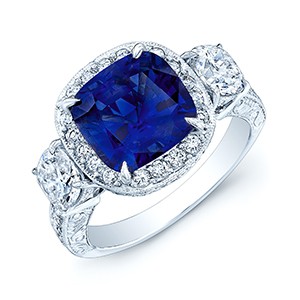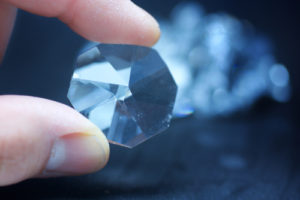
A Quick Look at Natural Blue Diamonds vs. Treated Blue Diamonds
 Natural blue diamonds are very rare, and it is said that to have found one is unforgettable even for the jewelers. If you closely study antique blue diamond engagement rings, you would realize that they all have two things in common – their rarity and exceptionally high value. However, this rarity and high price has led to the rise of many treated blue diamonds.
Natural blue diamonds are very rare, and it is said that to have found one is unforgettable even for the jewelers. If you closely study antique blue diamond engagement rings, you would realize that they all have two things in common – their rarity and exceptionally high value. However, this rarity and high price has led to the rise of many treated blue diamonds.
Although created in controlled laboratory conditions, treated blue diamonds boast of the same optical, physical, and chemical traits as that of their natural counterparts. Lab-made blue colored diamonds are actually white diamonds that undergo the high-pressure high-temperature process to get an iconic blue color. The intensity of the color can be easily manipulated here, so the price of treated blue diamonds stays in a much affordable range.
 If you were looking to buy a natural blue diamond ring, look at the GIA certification it carries to understand the color, cut, clarity, and carat of the stone in the ring. You can also check the certificate of authenticity to learn about the origin of the diamond; the majority of blue diamonds are mined from the Cullinan mines in South Africa, while a few have been found in Golkonda mine in India and Lesteng mine in Lesotho.
If you were looking to buy a natural blue diamond ring, look at the GIA certification it carries to understand the color, cut, clarity, and carat of the stone in the ring. You can also check the certificate of authenticity to learn about the origin of the diamond; the majority of blue diamonds are mined from the Cullinan mines in South Africa, while a few have been found in Golkonda mine in India and Lesteng mine in Lesotho.
